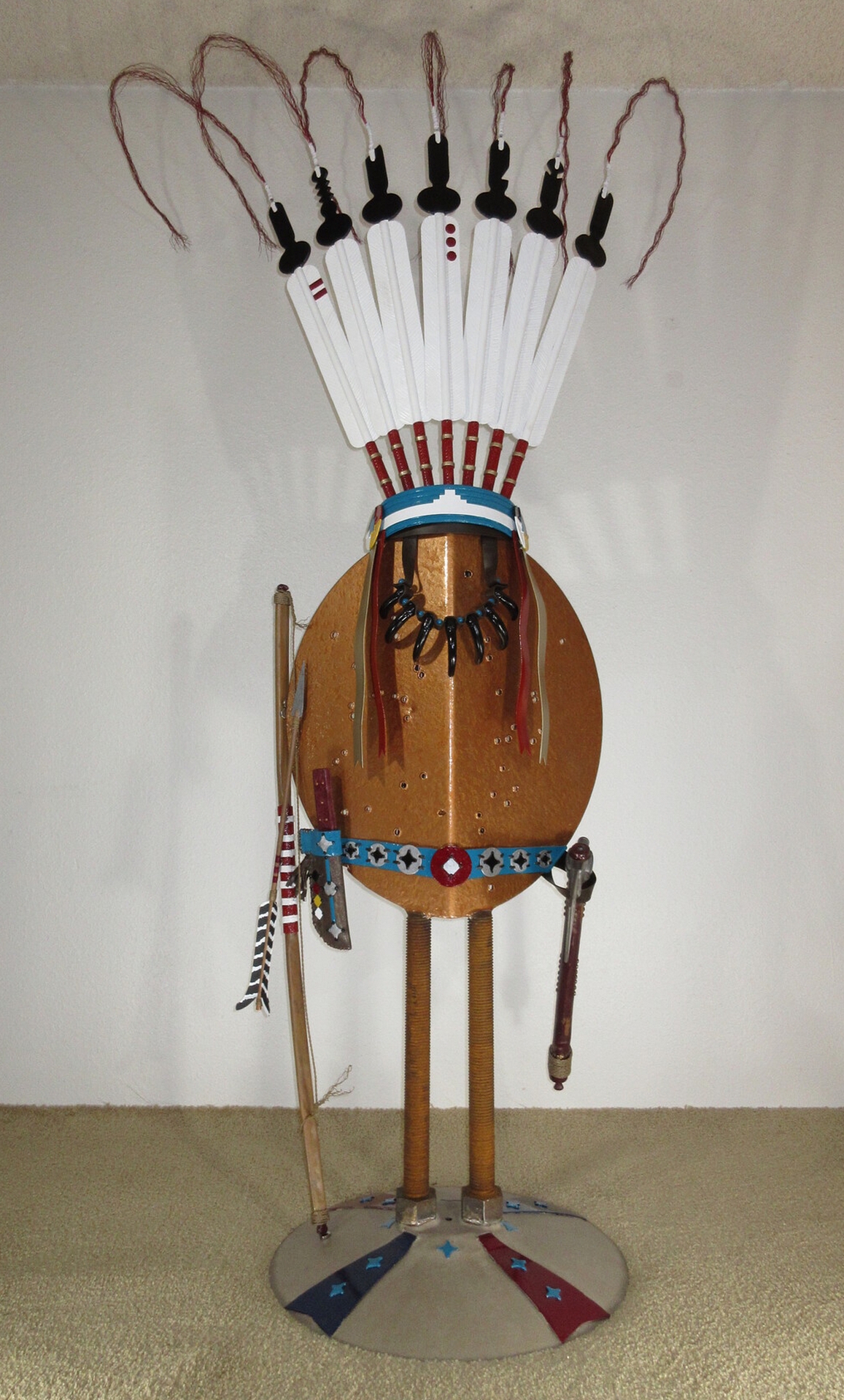“BLACK
COYOTE
WOUNDED KNEE CREEK"
DECEMBER
29TH, 1890” © 2020
Please View Photos Below
Michael
Herold (b. 1957) American, Denver,
Colorado USA
“BLACK
COYOTE WOUNDED KNEE CREEK DECEMBER
29TH, 1890” © 2020
Mild
Steel, Oil Enamel Paint
H 90”
- W 28” - D 24” - 150 LBS
The Story About This Sculpture
This
sculpture is a representation of Black Coyote, a warrior for the
Miniconjou subdivision of the Lakota Nation.
The
US 7th Cavalry Regiment sequestered the people at Wounded Knee Creek,
to prevent the Ghost Dance ceremony.
This ceremony was for freedom,
health, and to restore the buffalo which White hunters had wiped out.
The
encampment was surrounded by the 7th Calvary, and a battery of four
Hotchkiss guns were located on a hill overlooking Wounded Knee Creek.
An
order went out to confiscate all weapons. Black Coyote did not want
to relinquish his firearm. He was deaf.
A 30/30 Winchester rifle in 1890 was a
treasured possession, used to provide for his people and as self
defense.
The
soldiers tried to take his rifle. A shot rang out. The Calvary then
unleashed a volley from the Hotchkiss repeater guns upon the Lakota.
More
than 300 Lakota were massacred. Most were women and children.
This
incident created a national outcry.
It was known as the last great battle of
the Indian Wars, and for the final submission of the proud Lakota
people.
About This Sculpture
The attributes
of the sculpture closely reflect the traditional colors and designs
of the Lakota.
This
sculpture was taken to a gun range and shot 40 times.
The sculpture is created in groups of seven. Look closely and count seven in most every design aspect of the sculpture.
The sculpture was researched over many weeks to create a true representation. The sculpture is skillfully welded, formed, shaped and painted.
The size and shapes of the sculpture are correct.
The "weeping heart" pipe trade axe head and handle are true to form.
The short horse bow, with one ended shorter than the other in relation to the handle is true to form.
The choke cherry arrow shaft with trade arrowhead is true to form.
The grizzly bear
claw necklace is a traditional design is true to form. There are seven bear claws each from a different bear. The bravery of this warrior is great, to hunt seven grizzly with a bow and arrow.
The trade knife size, shape handle are correct.
The war bonnet is a traditional
design. Warbonnets were made using golden eagle feathers. Only the most brave and honored were allowed to wear a warbonnet.
The long strands of red wire on top depict red horsetail hair.
The red bottom of each "feather" is trade felt surrounded by trade brass rings.
The turquoise leather band is typical. The white leather strip across the band depicts a mountain range.
The side rossetts depict the "four directions" of the medicine wheel. The center is representivive of "The Great Spirit". The white is the north, earth, physical - nightime/winter. The red is the south, sun, fire, midday/summer. The black is the west, water, sunset/fall. The yellow is the east, air, sunrise/spring.
The The top black "feathers" of the war bonnet depict different acts of bravery and honor given to the warrior.
From left to right.
1) The warrior killed two enemy in a single battle.
2) The warrior counted coup more than four times.
3) The warrior slit an enemy's throat.
4) The warrior killed three enemy in a single battle.
5) The warrior slit and enemy's throat and took his scalp.
6) The warrior counted coup more than five times.
7) The warrior was wounded several times in battle.
PRICE - INQUIRE

